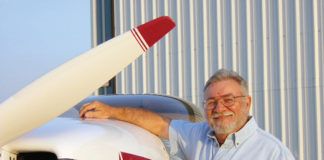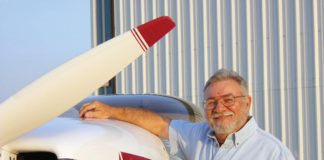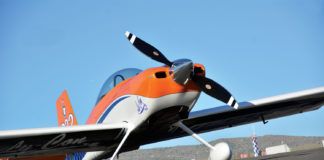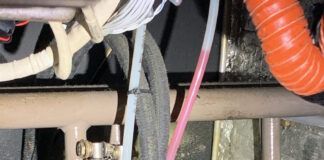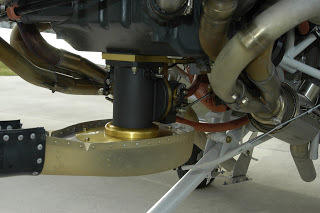 That Lycoming IO-540 on our nascent Van’s RV-10 is about 10 minutes old now, and still a sweetheart. Each engine start tested another function, checking the mags, the propeller, calibrating the rpm, and adjusting the mixture control.
That Lycoming IO-540 on our nascent Van’s RV-10 is about 10 minutes old now, and still a sweetheart. Each engine start tested another function, checking the mags, the propeller, calibrating the rpm, and adjusting the mixture control.
The Airflow Performance Experimental fuel injection system seems a little rough, but overall acceptable during the idle runs, and it produces startlingly balanced fuel flow across the six cylinders on the high speed and takeoff runups, considering no effort has been made yet to balance the fuel flow by adjusting the nozzles using the unique “restrictor” system provided by the company.
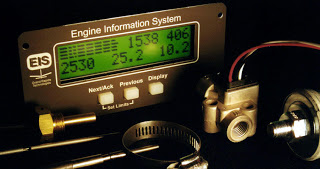 The Grand Rapids Technology EIS was used for checking everything (we haven’t yet plugged in the bigger EFIS screens), and it performed with the same aplomb as the one in our Kitfox 4 has done for seven years. I like the simplicity of this box. Hit the master and it is on, flashing for you to acknowledge each probe attachment. Once that is done it sets up ready to reel off all the information you need to get a basic read on your engine health. Magneto checks showed both the rpm drops, as well as the exhaust gas temperature rises across the cylinders. The constant-speed propeller checks showed the rpm drop and subsequent rises as well.
The Grand Rapids Technology EIS was used for checking everything (we haven’t yet plugged in the bigger EFIS screens), and it performed with the same aplomb as the one in our Kitfox 4 has done for seven years. I like the simplicity of this box. Hit the master and it is on, flashing for you to acknowledge each probe attachment. Once that is done it sets up ready to reel off all the information you need to get a basic read on your engine health. Magneto checks showed both the rpm drops, as well as the exhaust gas temperature rises across the cylinders. The constant-speed propeller checks showed the rpm drop and subsequent rises as well.
We had to wait until after nightfall (who decided that it would be a good idea to have daylight savings time in March?) to view the propeller through a fluorescent light bulb to see if the tachometer matched the actual rpm. Really, this works as a poor-man’s tach sync. Here’s why: The lightbulb pulses at a fixed rate, 60 positive and 60 negative pulses per second in the U.S. or anywhere using 120 volt household electricity to power the bulbs. When you illuminate a spinning propeller with a fluorescent bulb, it will appear to stop at certain rpm. This is where the frequency of the pulsing light matches the frequency of the spinning prop. For two-blade props such as our Hartzell, we can calibrate certain key rpm, 720, 1200, 1440 and 1800 this way.
What was fun about this task was that for once on this project, I got to be at the controls. There’s nothing quite like starting your new airplane for the first time. Of course, I bungled it. The RV-10 has an extra knob in it, labeled primer (but not the traditional kind) controlling fuel to the fuel controller on top of the engine. So the checklist is: fuel selector on, mixture rich, primer in, master on, fuel pump on 3 seconds, off, throttle cracked, magnetos to both, then start. Somewhere in there I got it turning, but pulled the throttle back too quickly and it quit. The second start I flooded it. Now my husband is cranky. He goes to reach around me and start it himself and, of course, it kicks over fine. You’ve got to love those special moments in a relationship.
Once the big fan out there is spinning in the dark you must use extreme care, because it’ll bite. All movement should be around the wingtips, out front and then in, and not too close. Our airplane was tied down and chocked, and I was holding the brakes even still. My husband snapped on the fluorescent bulb and I adjusted the throttle (slowly) to match the requested rpm. We did it twice (and I managed to perform a flawless hot-start on my first try) before concluding that our tachometer pickup was within 2%. That ought to work.
There is still some assembly and checking out to be done (not to mention an inspection to complete) before this bird can fly. But the engine should pull her as advertised.










